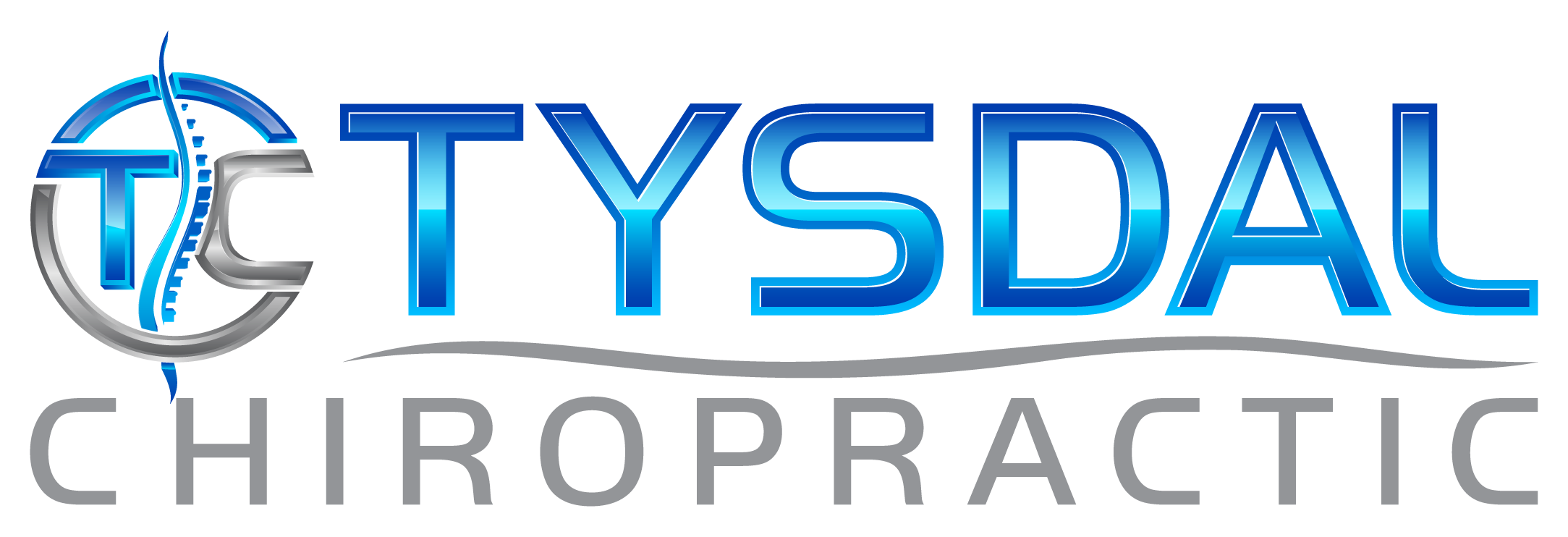Conditions
Some Common Conditions We May Help You With
(Click each for more info)
Bursitis/Tendonitis
 Bursitis is inflammation or irritation to the bursa (small sacs between bone and other moving parts, such as skin, muscles and tendons). Tendonitis is inflammation or irritation of the tendon (thick fibrous cords that connect muscles to bone). Symptoms of bursitis and tendonitis are similar and include inflamed soft tissues that replicate symptoms of joint pain. Many times it is mistaken for arthritis. For these conditions, pain and stiffness often intensifies with movement. Bursitis and Tendonitis will not cause deformity, but can limit motion.
Bursitis is inflammation or irritation to the bursa (small sacs between bone and other moving parts, such as skin, muscles and tendons). Tendonitis is inflammation or irritation of the tendon (thick fibrous cords that connect muscles to bone). Symptoms of bursitis and tendonitis are similar and include inflamed soft tissues that replicate symptoms of joint pain. Many times it is mistaken for arthritis. For these conditions, pain and stiffness often intensifies with movement. Bursitis and Tendonitis will not cause deformity, but can limit motion.
Common causes of tendonitis and bursitis include, injury or overuse and are seen in people that have bad posture or are not in good physical condition. Avoiding overuse and repetitive physical stress to the affected area is suggested to help with these conditions. Medications may be used to reduce inflammation that can be associated with tendonitis or bursitis. A doctor of chiropractic can help alleviate the problem by correcting the joint position, applying laser to reduce inflammation or incorporate soft tissue based therapies such as ART to break up muscle adhesion which prolongs the condition. These methods have been proven to be an effective way to treat these disorders.
Degenerative Joint Disease/Osteoarthritis
 What Is Osteoarthritis?
What Is Osteoarthritis?
Osteoarthritis (OA), also known as degenerative joint disease, affects more than 20 million Americans and is more common in women than in men. The disease affects the cartilage—slippery tissue on the ends of bones that meet in a joint. Normally, cartilage helps bones glide over one another as the joints move. In an OA patient however, the cartilage is broken down and eventually wears away. As a result, instead of gliding, bones rub against each other, causing pain, swelling, and loss of motion. Although the majority of patients with OA are 65 and older, recent research shows that osteoarthritis is not a by-product of aging.
Risk Factors include:
- Family History of OA
- Obesity
- Lack of Exercise
- Previous Joint Injury
How Can Your Chiropractor Help?
Doctors of chiropractic, can detect the earliest degenerative changes in the joints. They see the impact of degenerative changes in the spine, as well as the hips, knees, and other weight-bearing joints. Doctors of chiropractic are also trained to relieve the pain and improve joint function through chiropractic manipulation, trigger-point therapy, and soft tissue therapies such as massage and Active Release Technique. Chiropractors can help you choose exercises that are best for reduction of joint pain. If a sore or swollen joint prevents you from exercising, talk to your chiropractor about other drug-free pain-relief options, such as applying heat or cold to the affected area. In addition, your chiropractor can help you choose proper supplements that play important roles in OA prevention and treatment.
In July of 2012, SF Custom Chiropractic promoted the use of multi radiance laser in honor of Juvenile Arthritis month. Laser therapy, along with chiropractic care has been proven to be an effective treatment for arthritis pain.
Headaches
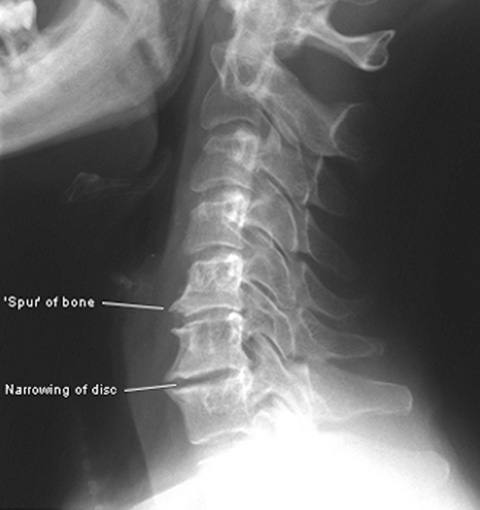 Most of us have experienced the throbbing or stabbing pain of a headache and because the head controls the rest of the body it is hard to ignore. There are several types of headaches and the exact cause can be complex.
Most of us have experienced the throbbing or stabbing pain of a headache and because the head controls the rest of the body it is hard to ignore. There are several types of headaches and the exact cause can be complex.
Headaches are not normal. Recurring headaches are a sign that something is wrong and should not be ignored. Aspirin, ibuprofen and other medications may temporarily mask the symptoms but they do nothing to correct the source of the problem. As long as the problem remains the headaches will continue to come back.
Vertebrogenic Headaches are caused by problems with the vertebrae in the cervical spine. These headaches may be felt in the back, sides and front of the head or in the front of the face or neck. Chronic irritation of the nerve roots between the vertebrae can be caused by changes to the normal curvature of the cervical spine caused by trauma, degenerative arthritis or poor posture. The onset of pain is often acute and may also cause muscle contractions in the neck that can often trigger tension headaches as well. Pain is the body’s way of alerting us that something is wrong. It is unwise to ignore these signals and treat just the symptoms.
A Doctor of Chiropractic is highly experienced in finding the causes of the headaches as well as relieving the immediate pain. They can determine whether the pain is due to a physical or structural problem and correct it. In most cases a series of spinal adjustments to return misaligned vertebrae to their normal position can relieve pressure on the irritated nerve roots. Relaxation exercises and lifestyle changes may be suggested to avoid future headaches. Medical management of headaches usually involves some type of medication that can result in unwanted side effects or dependencies. Chiropractic offers a natural and safe approach to relieving and preventing future headaches.
Herniated Discs
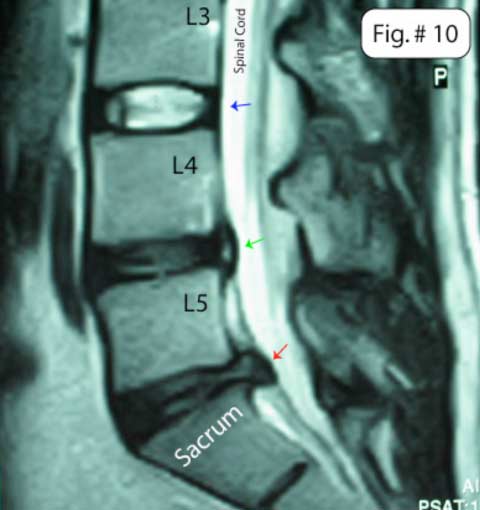 For many decades, doctors and scientists believed that most back pain was caused by ”slipped” or “torn” discs. We now know this not to be true. Disc problems constitute only a small portion of the causes of back pain and rarely require surgery for pain relief.
For many decades, doctors and scientists believed that most back pain was caused by ”slipped” or “torn” discs. We now know this not to be true. Disc problems constitute only a small portion of the causes of back pain and rarely require surgery for pain relief.
What are spinal discs?
The discs provide shock absorption, protecting the spinal cord and ensuring flexibility of the spine. They also perform other functions. The spinal discs are essentially ligaments (structures connecting bones) that attach to the top and bottom of each vertebra. Lastly they act as a fulcrum to direct the type of movement through which each vertebra travels.
What are the most common disc problems?
• A disc “bulge” results from slight tears in the outermost fibers of an annulus fibrosis. These small tears can be painful for a short time.
• A disc protrusion/extrusion, also called “herniation,” is a more significant injury. It results from a complete or significant tear of the fibers of an annulus-when some of the nucleus leaks through. A herniation can also be painful and may even cause nerve compression. In the most severe cases, the spinal cord can become compressed.
• The most common disc problem suffered by adults is degenerative disc disease. This occurs when the disc nucleus loses water and small tears develop in it. The body then forms osteophytes (bone spurs), along the edges of the vertebra and the disc space narrows. We used to believe that this was a function of “wear and tear” as we aged. The most recent evidence shows that, most often, there is a hereditary link to the development of degenerative disc disease. Degenerative disc disease can also be caused by trauma/injury.
What are the common signs and symptoms of disc problems?
Common signs of disc problems include, but are not limited to:
• Back or neck pain
• Leg or arm pain
• Stiffness
• Tenderness of the spine and spinal muscles
How are disc problems treated?
Luckily, in most circumstances, disc problems are easily treated with conservative interventions. Early in the course of an acute injury, your doctor of chiropractic will likely set a goal of pain control, using several different physical modalities to reach it. Both ice and heat have shown effectiveness in managing the pain of acute low-back injury. Your chiropractor will help you determine which is most effective for you. In addition, getting you back on your feet and moving as quickly as is safely possible is critical. Typically, the less time you spend in bed, the better off you are in terms of long-term results. You’ll also need to learn not to be afraid to move. If you “baby” your back, in most cases, the long-term results will be worse. Chiropractic spinal manipulation has also been demonstrated to be a safe and effective tool in the management of disc problems. Manipulation is especially effective when combined with therapeutic exercise. In most circumstances, spine surgery and injections are not necessary in the management of disc problems- and they often cause more problems than they’re worth. Your doctor of chiropractic will discuss all available treatment options with you and help you decide on the best course of action.
Can disc problems be prevented?
While regular exercise will help strengthen your back, research has demonstrated that staying fit and using proper body mechanics alone will not prevent injury. The National Institute for Occupational Safety and Health (NIOSH) recommends that individuals do not lift more than 50 lbs. Further, activities that require awkward or prolonged postures and repetitive stresses, place individuals at higher risk for musculoskeletal disorders and disc problems regardless of body mechanics and fitness level. Your doctor of chiropractic can conduct an ergonomic assessment of your work and home activities to help you prevent injury. It is also critically important to have “spinal awareness.” Make a conscious effort, for example, to be aware of what posture you are maintaining when you sit, stand, lie down, work, and exercise. Lift objects with proper posture, including bending your knees, keeping the object close to your body, keeping your back straight and lifting with your legs. Never lift an object by bending over and twisting. You’ll only invite a back injury.
Low Back Pain
 A chiropractic approach to treating low back pain is to find the source of the back pain and correct it, not just treat the symptom; this ensures that the body can heal naturally. Low back pain often responds dramatically to the correction of vertebrae positioning and the restoration of normal motion.
A chiropractic approach to treating low back pain is to find the source of the back pain and correct it, not just treat the symptom; this ensures that the body can heal naturally. Low back pain often responds dramatically to the correction of vertebrae positioning and the restoration of normal motion.
Chiropractors use spinal manipulations or adjustments to precisely apply a directed force to the vertebrae that is out of position. Gradually, these adjustments help restore normal range of motion, position and function of the joint. The doctor may either use their hands or specialized tools to apply a quick thrust or slower pressure to the misaligned joint.
A common cause of low back pain can be problems with the disc, the fibrous cushion between each vertebra. A bulging or ruptured disc can irritate nerves that travel from the spinal cord. Leg pain, numbness, tingling or weakness in the legs may all be a result of disc irritation. Low back problems are more common in people who are in poor physical condition and those with jobs that include heavy lifting, long periods of sitting, standing or lots of bending. Emotional stress or long periods of inactivity may intensify symptoms or trigger the appearance of previous problems.
Additionally, your chiropractor may suggest adding exercises, hot or cold compresses, or massage to compliment your adjustments. It may also be helpful to consider some lifestyle changes such as healthier eating and stress reduction techniques.
It is important to have back pain treated within the first month of the onset of the pain. Waiting until the pain is unbearable or immobilizing is not only unhealthy but may end up costing more time, stress, and money in the long run.
Neck Pain
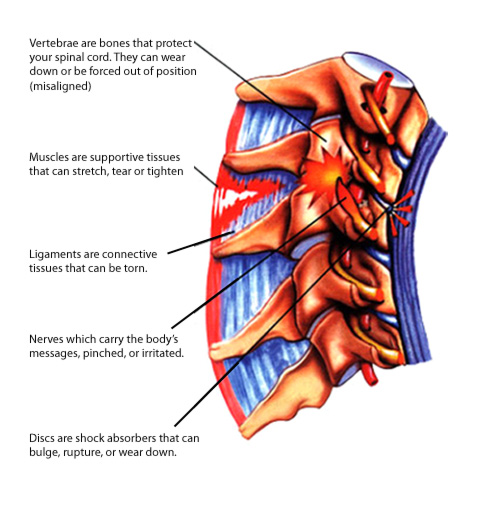 Neck pain can be common; there is a good chance that you have experienced some type of neck discomfort at one time or another. The neck supports your head, which can weigh 10 pounds or more! In addition to supporting your head it needs to be able to functionally move in all three planes of motion. Injuries and imbalances can cause cervical vertebrae to move out of their correct position (Subluxation). Tendons, ligaments and muscles can become inflamed and worn out, the discs separating the cervical vertebrae can herniate or rupture and the nerves can be damaged or irritated from the misalignment.
Neck pain can be common; there is a good chance that you have experienced some type of neck discomfort at one time or another. The neck supports your head, which can weigh 10 pounds or more! In addition to supporting your head it needs to be able to functionally move in all three planes of motion. Injuries and imbalances can cause cervical vertebrae to move out of their correct position (Subluxation). Tendons, ligaments and muscles can become inflamed and worn out, the discs separating the cervical vertebrae can herniate or rupture and the nerves can be damaged or irritated from the misalignment.
The neck changes as we age. Arthritic changes in the spinal bones such as abnormal bony growth, disc degeneration, and muscle or ligament deterioration may change the normal healthy curve of the neck and result in irritation of the nerves in the spine.
Problems of the neck if left untreated can lead to pain symptoms experienced in the face, shoulder arm, wrist and hand as well as decreased motion.
Standard medical treatments for your neck pain can include muscle relaxants, painkillers and tranquilizers. Medications mask the pain, but they do not address the underlying cause. In many cases, chiropractic treatment can help ease pressure on the nerves and prevent the need for surgery. In most cases surgery should be considered only when conservative treatments fail.
The chiropractic approach to treating neck pain is to find the source of the neck pain and correct it. By correcting the source of the problem your body is able to heal itself naturally. Neck pain often responds dramatically to the restoration of normal spinal function through chiropractic care.
Plantar Fasciitis
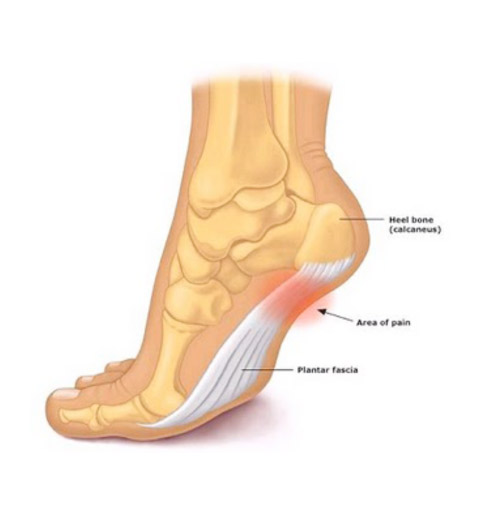 Plantar Fasciitis is the most common cause of heel pain. The fascia connects the tissue that connects your heel bone to the toes and supports the arch of your foot.
Plantar Fasciitis is the most common cause of heel pain. The fascia connects the tissue that connects your heel bone to the toes and supports the arch of your foot.
Symptoms of plantar fasciitis are pain from:
- Walking
- Climbing stairs
- Being on the bed
Standing/sitting for long periods of time
There are many causes of Plantar Fasciitis, such as an increase in walking, running or physical activities, flat feet, over pronation or poor arch support. There are quite a few treatment options and no one option works best for everyone. Icing the area, reducing physical activities such as running and frequent calf stretching are common suggestions. Most medical doctors recommend a steroid shot. This may alleviate pain for a certain time period, but this is not a permanent solution. A chiropractor can help break up the inflammation by utilizing laser and soft tissue therapies such as ART or Tecnica Gavilan. If the cause is collapsed arches or flat feet then custom orthotics may be the best solution. Your chiropractor will not only be treating the pain, but the underlying structural problem. This will allow for proper healing and the prevention of future problems.
Whiplash
 Whiplash is one of the most common and well known injuries from a car accident. This occurs when the force of the accident ‘whips’ the head violently from direction to another farther than normal limits, resulting in muscles, tendons and ligaments that support the spine are overstretched, torn or irritated. The soft, cushioning discs that occupy the space between the spinal bones can herniate or rupture. Symptoms may take hours, days or weeks to appear.
Whiplash is one of the most common and well known injuries from a car accident. This occurs when the force of the accident ‘whips’ the head violently from direction to another farther than normal limits, resulting in muscles, tendons and ligaments that support the spine are overstretched, torn or irritated. The soft, cushioning discs that occupy the space between the spinal bones can herniate or rupture. Symptoms may take hours, days or weeks to appear.
- Sore or still neck
- Headaches
- Pain, numbness, or tingling in the back, arms, shoulders, and hands
- Reduced ability to move the head
- Ringing in the ears, dizziness, hearing loss, or blurred vision
Whiplash may not be a minor injury, Even though damage to your car may be minimal, whiplash may have caused spinal damage. Frequently, lifelong health problems begin as a whiplash injury that was dismissed as minor at the time. Any trauma to the spine can disturb the normal position and motion of the vertebrae, affecting nearby muscles, ligaments and discs. Doctors call these vertebral subluxations. The vertebrae protect the spinal cord so even a small disturbance can have a profoundly adverse affect on the delicate nerve tissue.
The damage to the nervous system can cause tissue and organ damage throughout the body an enable it to function properly. This degenerative chain reaction is the result of many underlying health problems and can slowly destroy even good health. Medical doctors are trained to treat life threatening emergencies such as bleeding and broken bones. They are not trained to recognize underlying spinal damage. Many patients leave the emergency room with a health problem that will only grow worse with time. Health conditions seemingly unrelated to the back can often be traced to the nervous system impairment involving the spine.
Treatment will vary depending to the severity of your condition. A series of adjustments will most likely be performed. An adjustment is a precisely applied force to an area to help restore balance to the spine and relieve pain and stiffness. Other therapies may be recommended to help relax or strengthen the muscles or to reduce swelling. Ice and heat therapies, massage, traction or trigger point therapies may be utilized. Lifestyle modifications such as the reduction of stress or dietary changes may be suggested.
Scoliosis
 All spines have a normal front and back curve to them, this help distribute the bodies weight evenly. Scoliosis is a progressive, abnormal sideways curve of the spine. The spine often curves in a “S” or “C” shape from side to side. Scoliosis is often found in the adolescent and teen years and is more common in girls, although boys can get it as well
All spines have a normal front and back curve to them, this help distribute the bodies weight evenly. Scoliosis is a progressive, abnormal sideways curve of the spine. The spine often curves in a “S” or “C” shape from side to side. Scoliosis is often found in the adolescent and teen years and is more common in girls, although boys can get it as well
If scoliosis is left untreated, it can cause serious medical problems. Pain, stiffness, and sever spinal deformity can result. The spine and rib cage are connected and the abnormal curvature of the spine can change the position of the ribs and put pressure on nearly organs. Health risks from severe curvature include neurological problems from pressure on nerves, arthritis and even lung and heart problems.
- One shoulder higher than another
- An uneven waistline
- One shoulder blade sticking out further than the other one
- A Chiropractor can diagnose scoliosis and is specially trained to treat the problems of the spine. They are able to accurately determine the extent of the condition. X-rays may be used to determine the rotation and direction of the curve.
Your chiropractor’s goal is to detect scoliosis while the child is still young. If started on an exercise and chiropractic therapy program early enough, it is possible to slow, stop or even reverse the progress of the spinal curvature.
Medical management of scoliosis often involves the ‘wait and see’ approach. Although this may work for slow progressing cases, others may progress rapidly creating significant spinal deformity. When the problem becomes severe enough, braces or surgery may be necessary. The chiropractic approach is to use specific spinal adjustments along with a program of corrective exercises. Chiropractors return the vertebrae to a more normal position.
With careful monitoring, regular treatment and exercise the spinal deformity of scoliosis can be minimized and invasive procedures can be avoided.
Shoulder Arm Hand & Neck Pain
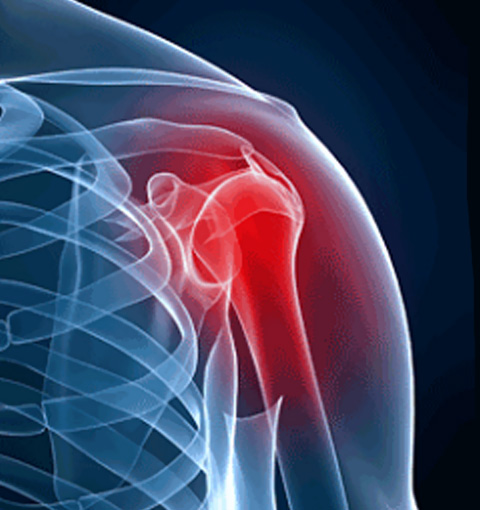 Neuritis, bursitis, neuralgia, rheumatism, frozen shoulder, fibrositis, sprain and strains are common terms that refer to neck, shoulder and arm conditions. The main controller behind your shoulders, arms and hands is the brain. The brain communicates to the rest of your body through billions of nerves that make up your nervous system. Some nerves go straight to their destination point, but others mix with other nerves to form complicated nerve networks called a ‘plexus.’ The brachial plexus is made up of nerves that come out of the middle and upper back that supply information to the shoulders, arm, elbows, wrists, hands and fingers.
Neuritis, bursitis, neuralgia, rheumatism, frozen shoulder, fibrositis, sprain and strains are common terms that refer to neck, shoulder and arm conditions. The main controller behind your shoulders, arms and hands is the brain. The brain communicates to the rest of your body through billions of nerves that make up your nervous system. Some nerves go straight to their destination point, but others mix with other nerves to form complicated nerve networks called a ‘plexus.’ The brachial plexus is made up of nerves that come out of the middle and upper back that supply information to the shoulders, arm, elbows, wrists, hands and fingers.
The nerves that make up the brachial plexus may become irritated as they leave the spinal column. This can occur when the spinal bones in the neck and upper back are misaligned or do not have the range of motion they typically should and damage the very nerves they are supposed to protect. Any injury or trauma can cause the bones to become misaligned or lock down, decreasing the range of motion. Things as serious as an accident or falling down from an accident, or even as simple as sleeping in an awkward position can create the vertebrae to become misaligned or not work the way they were designed.
Muscles and joints throughout the chest wall and shoulder can also contribute to tightness around the brachial plexus, causing similar symptoms. This can be caused be structural deformities (such as previously shoulder injuries or anatomic variations) or created by lifestyle (such as sitting at a desk or having a sedentary workplace). The pressure placed on the nerves and blood vessels can create numbness, tingling and pain down the arm. This can also be known as “thoracic outlet syndrome”.
Symptoms from damage to the brachial plexus can differ depending on location of the trauma.
Common symptoms to the shoulder, arm, wrist or hand are:
- Muscle weakness
- Muscle numbness
- Neck pain
- Neck stiffness
Decreased range of motion in the neck, shoulder, elbow or wrist
In addition to pain and symptoms in your arm or neck, it is not uncommon to experience headaches, facial pain, dizziness, thyroid or nasal problems as a result of brachial plexus nerve irritation.
Symptoms include tingling and numbness in the hand. The pain is described as incredibly intense and has been reported to awaken sufferers at night. This pain is often caused by the swelling in the wrist. Often times people confuse nerves that are disrupted by the spine, muscles or joints as carpal tunnel syndrome, however, this has a completely different approach that a chiropractor would take. This misdiagnosed conditions can sometimes lead to unnecessary injections or surgery which could have otherwise been treated with conservative chiropractic care and Active Release Technique.
There continues to be an increase in people suffering from pain and neurologic symptoms in their shoulders, arms and hands, seeking help from chiropractors. The chiropractic approach analyzes the body’s structure to locate and correct the nerve-damaging structural condition known as subluxations. Sports chiropractors with additional training can further help with use of functional training, rehab exercises and the gold standard in soft tissue therapy – Active Release Technique (or A.R.T.). This will eliminate the pain and correct the underlying structural problem that is referring pain to the arm, wrist, and hand problems.
If you are experiencing any of the signs or symptoms listed above, don’t hesitate to reach out to us by filling out our new patient form to be evaluated to see if chiropractic is right for your condition.
Spinal Stenosis
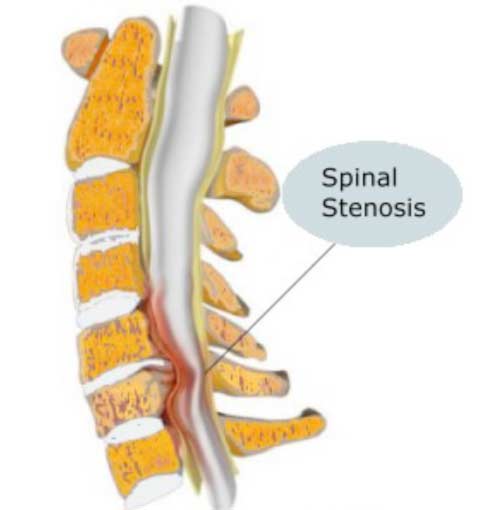 What is stenosis?
What is stenosis?
Spinal stenosis is created by the narrowing of the spinal canal. This narrowing may be caused by mechanical problems or by abnormalities in the aging spine. It may or may not result in low-back pain, limping, and a lack of feeling in the legs. Stenosis is often a degenerative condition. It may exist for years without causing pain or discomfort, but a fall or an accident can trigger characteristic stenotic pain. Numerous factors can cause stenosis, such as thickened ligaments, expanding infection, abscess, a congenital or developmental anomaly, degenerative changes, vertebral fractures or dislocations, or a spinal cord tumor.
Other conditions, such as a herniated disc, can mimic stenosis. While herniated discs usually cause rapid and acute muscle spasm, discomfort caused by stenosis builds gradually. Other conditions that can be confused with stenosis include vascular claudication, peripheral vascular disease, and abdominal aortic aneurysms. Claudication—pain triggered by walking—caused by vascular disease most often occurs after walking a fixed distance. Patients with spinal stenosis, however, walk variable distances before symptoms set in. Activities like riding a bicycle and walking up a hill can cause pain in patients with vascular claudication, but not in those with stenosis. On the other hand, standing makes pain worse for stenotic patients, while it relieves vascular claudication.
How is stenosis treated?
There are three basic treatment approaches to spinal stenosis:
- The conservative medical approach, which frequently involves bed rest, analgesics, local heat, and muscle relaxants
- The conservative chiropractic approach, which includes manipulation, exercise and self-care techniques
- Surgery
The source of the stenosis often dictates the treatment. Although medications can provide pain relief, those powerful enough to deaden the pain can also exacerbate patients’ already compromised sense of balance. When the patient loses bowel or bladder control, suffers from intolerable leg pain and claudication, and has progressive loss of function or spinal cord tumors, surgery is the first and only option. The standard stenosis surgical procedure usually involves opening up the spinal canal and decompressing the neural elements by removing the bony structures that contribute to canal narrowing. Although many patients do fairly well after the surgery, the symptoms are likely to return after a period of time. Recent studies show that although stenosis surgery will often have good results up to two years, in the long run, outcomes are much the same between surgery and conservative care. Some surgeries have to be repeated years later. Many are far from fully satisfactory. Surgery is a complicated procedure that irreversibly changes the structure of the back.
In many mild and moderate cases of stenosis, however, non-invasive conservative care, such as chiropractic, can help lessen pain and discomfort, maintain joint mobility, and allow the patient to keep a reasonable lifestyle, at least for some time. A technique called distraction manipulation may be helpful in reducing leg discomfort. Home exercises are a major part of the conservative treatment program. It is recommended to exercise four or five times a week with physical activities such as riding on the bicycle or lying on the side and grasping the knees with the arms, focus on flexing the spine in a forward position—stretching and strengthening the lower back and stomach muscles and improving muscle strength. Exercises designed to mobilize the involved nerves have been found to be particularly helpful.
Ultimately, stenosis is a chronic condition that cannot be “cured,” but it often can be improved, and improvement can be maintained over the long term. Patients can work with a health care provider, such as a doctor of chiropractic, to reduce symptoms and improve their quality of life.
Sports and Chiropractic
 Injures that occur in a contact sport such as, football or hockey are similar to those obtained in an auto accident. When the body is subjected to a forceful impact, the vertebrae and soft tissues are compromised. Injuries that occur to the arms and legs are often detected quickly and can be corrected. The damage done to the displacement of vertebrae in the neck or back may not be detected until much later. Sports that require repetitive twisting bending or impact can also lead to damage. Activities such as golf, tennis, running or gymnastics can lead to injuries to the soft tissues around the spine such as muscle, ligaments, tendons and discs from repeated jarring causing wear and tear.
Injures that occur in a contact sport such as, football or hockey are similar to those obtained in an auto accident. When the body is subjected to a forceful impact, the vertebrae and soft tissues are compromised. Injuries that occur to the arms and legs are often detected quickly and can be corrected. The damage done to the displacement of vertebrae in the neck or back may not be detected until much later. Sports that require repetitive twisting bending or impact can also lead to damage. Activities such as golf, tennis, running or gymnastics can lead to injuries to the soft tissues around the spine such as muscle, ligaments, tendons and discs from repeated jarring causing wear and tear.
A chiropractor can help restore proper spinal alignment with a series of spinal adjustments, soft tissue work and other modalities such as hot or cold compresses and traction. Doctors trained in sports chiropractic have specific training in treating injuries from sports and athletics to help improve performance.
The reason why U.S. Olympic Teams, professional sports teams and professional athletes rely on regular chiropractic care is because it works! Chiropractic speeds recovery from injury, enhances performance and helps prevent future problems. Sports chiropractors ensure that athletes return to peak performance by applying chiropractic ideals to restore biomechanical and muscular function. Athletes in sports such as football, soccer, basketball, runners, bowlers and skiers have found that chiropractors are able to give them an edge in their competitions.
Subluxation
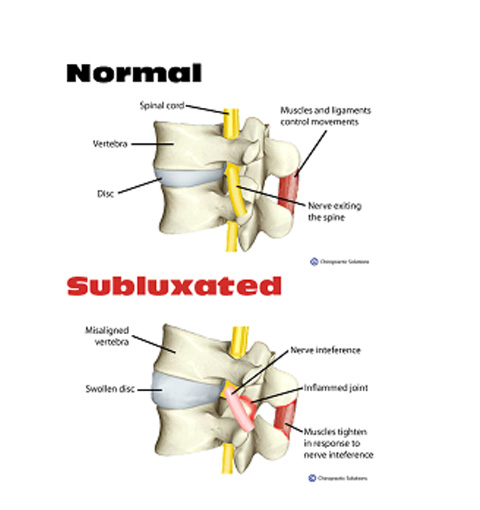 This occurs when the joints in your spine have limited range of motion. When the spinal bones move out of their normal position it is called a subluxation.
This occurs when the joints in your spine have limited range of motion. When the spinal bones move out of their normal position it is called a subluxation.
The spinal cord is the communication pathway for nerve impulses to and from the brain. These messages determine the health and function of virtually every cell, tissue, organ and system of the body.
Vertebrae protect these nerves; even a small change in the position of the spinal bones can have a profound adverse affect on these delicate nerve tissues.
There are five components of the subluxation complex. Spinal Kinesiopathology occurs when the bones of the spine loose their normal motion and positional form. This can happen through injury, strain, poor posture or other stresses. This component will result in a decreased ability to turn or bend. Nueropathology causes symptoms of numbness, burning, or tingling in various parts of the body and are a result of sensitive nerve tissue being squeezed, rubbed, stretched or twisted from misaligned joints. Myopathology is commonly caused by nerve impulse impair from muscles that support the spine. Muscles weaken, atrophy, or become smaller, tighten and can go into spasm. This can result in scar tissue that permanently affects the muscle’s elasticity. Histopathology affects the soft tissue near the spine. Pressure from the vertebrae can have adverse affects including herniating the disc spaces, causing them to tear, degenerate or bulge. Ligaments often stretch or tear and other soft tissues swell and inflame. This may result in permanent damage. Pathophysiology is a response to the body growing new bone in order to attempt to stabilize the joint. Over time these bony spurs can completely immobilize the joint causing scar tissue and long term damage or malfunction to other systems in the body
The primary tool in treating spinal subluxations is the use of manual adjustments. This is performed by applying a precise directed force to the joint that is out of position or is not moving properly so that it can be returned to its normal position and function. This is often done with the chiropractors hand to deliver a quick, therapeutic thrust to the affected joint. It is safe, highly effective and pain free.
TMJ Pain
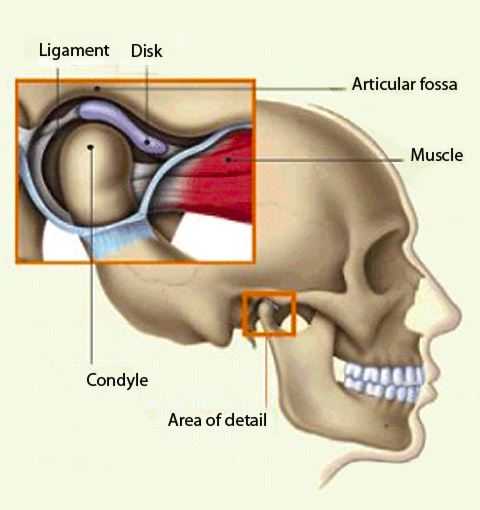 Temporomandibular disorders, also called TMJ, affect the joint where your skull meets your lower jaw. Common symptoms include jaw clicking, pain, stiffness or a locked jaw. These symptoms are a result of the joint being misaligned and/or muscle adhesions in the jaw muscles which can occur from grinding or clenching your teeth, poor posture or an injury.
Temporomandibular disorders, also called TMJ, affect the joint where your skull meets your lower jaw. Common symptoms include jaw clicking, pain, stiffness or a locked jaw. These symptoms are a result of the joint being misaligned and/or muscle adhesions in the jaw muscles which can occur from grinding or clenching your teeth, poor posture or an injury.
This occurs when the muscles tighten and the skull and lower jaw are pulled closer together and become misaligned. This puts pressure on the joint and compresses the disc.
When the ligaments stretch or tear it can pull the disc out of position. This is common in injuries such as whiplash.
Degeneration of the joint occurs when the disc wears away, leaving the bones rubbing against and irritating the nerves.
Chiropractors look beyond just your jaw, but at your overall lifestyle. A total approach to wellness helps determine the best course of action for your problem.
Adjustments may be used in your treatment of TMJ depending on the cause of your jaw disorder. During an adjustment, the chiropractor may press on your jaw, skull or upper spine to relieve irritated nerves and increase your jaw’s range of motion.
Soft tissue based therapies including Active Release Technique may be incorporated into your treatment. This is a patented tissue based therapy that breaks up adhesions and scar tissue on the surrounding muscle and ligaments. This is proven to be a very effective method when combined with regular chiropractic treatments or as a stand alone treatment.
Our Hours
Monday, Tuesday, Thursday
9:00am - 5:30pm
Wednesday
2:00pm - 5:30pm
Friday
9:00am - 12:30pm
Saturday
By Appointment Only
Sunday
Closed
(218) 998-1099
Call or click here to schedule an appointment today!
Contact Us
402 W Lincoln Ave
Fergus Falls, MN 56537
